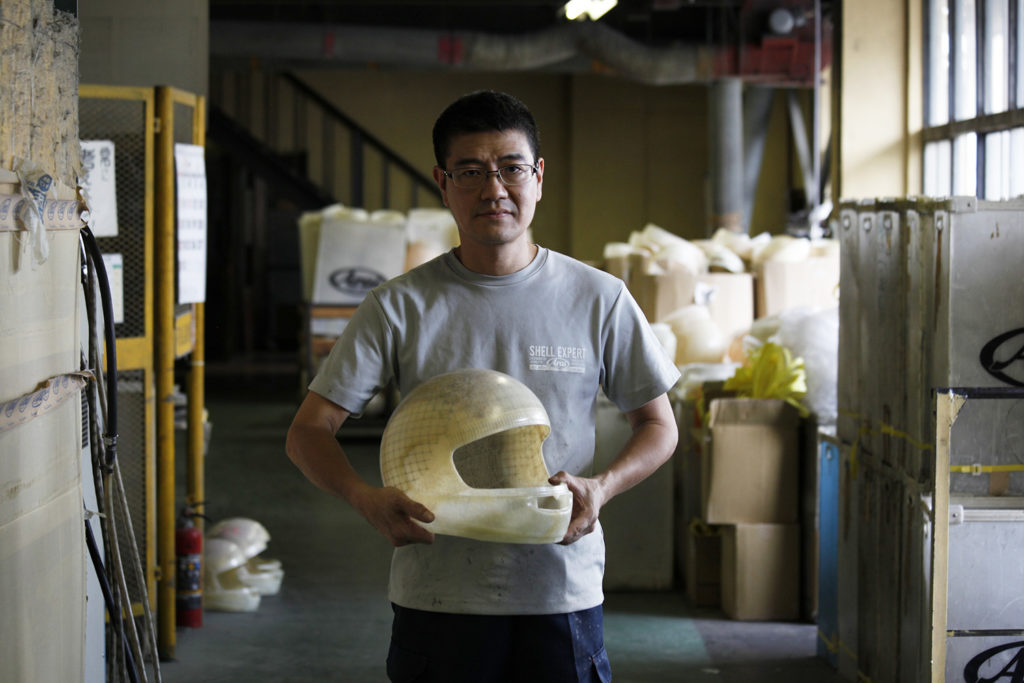The Why Behind Arai Helmets

Akihito Arai pictured at the Arai factory in Japan.
In 1914, a doctor practicing near the Brooklands racetrack in England first correlated the relationship between motorcycle accidents and serious head injuries. Dr. Eric Gardner went on to invent the first purpose-built motorcycle helmet. It wasn?t until two decades later, when a head injury resulting from a motorcycle accident took the life of Thomas Lawrence, better known as Lawrence of Arabia, that the first serious studies were conducted into the efficacy of motorcycle helmets in reducing the severity of head injuries. Hugh Cairns, Lawrence?s attending doctor and a leading neurosurgeon, used his findings and influence to ensure that helmets would become obligatory equipment for British Army Signal Corps riders going forward.
Early helmets were mostly constructed from cork, leather, and sometimes wood, and remained so until post-war developments in synthetic materials lead innovators such as Hirotake Arai to develop an entirely new design. Arai, a keen motorcyclist, had retooled his family hat business to produce safety helmets for construction workers. Applying the same manufacturing techniques, he began making and selling the first Japanese motorcycle helmets in 1952. They were made from a fiberglass resin outer shell lined initially with cork, and later, expanded polystyrene (EPS).
Seven decades on, motorcycle helmets, along with a multitude of international standards, have evolved exponentially, as has o...
| -------------------------------- |
|
|
2025 BMW M 1000 RR, S 1000 RR, M 1000 R, and S 1000 R Preview
31-10-2024 07:22 - (
motorcycle )












